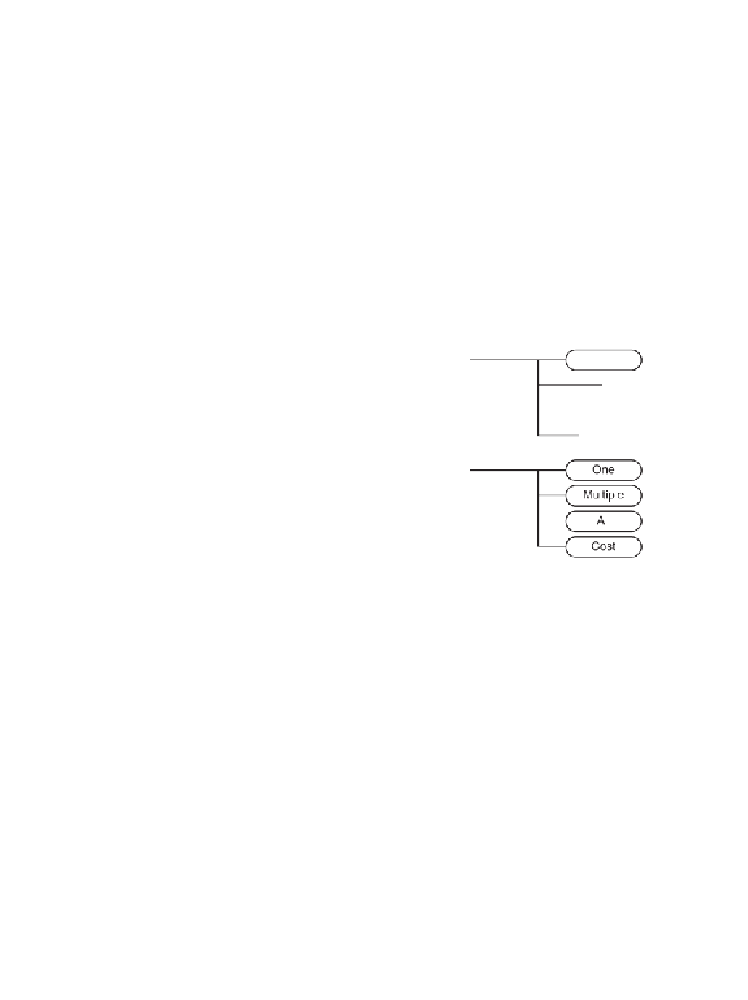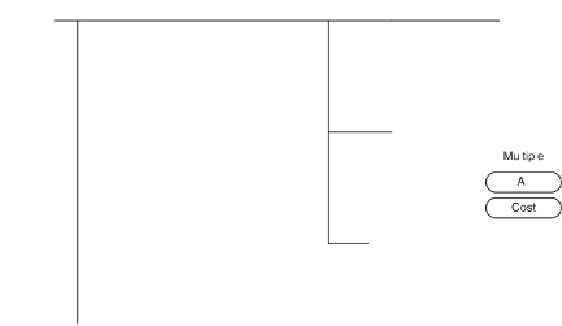Game Development Reference
In-Depth Information
Finally, proceed through each Caused by node and add the possible categories of
affected cards: One, Multiple, and All. Additionally, cards can be sent to a deck, hand,
or graveyard as part of the cost to activate the effect of another card. This limits the
Cost cause to branches that have Graveyard as the Goes “to�? choice. The distinction
between Multiple and All is that a Multiple card effect involves a selection process to
determine which cards are affected, whereas the All effect does not involve this process.
Figure 13.9 reflects the expanded tree structure for the Deck-Graveyard branch.
Figure 13.9
Expanded Deck-Graveyard branch.
In the last step of the design process, identify at least one card that meets the criteria
for each end node of the tree. Reduce the tree along the way by identifying branches
that are not possible given the abilities of the cards that are available in the game. For
example, there is no Magic card that could send All players' Black Pendant cards from
their deck to the graveyard, so the All node is eliminated from the Deck-Graveyard-
Magic Card branch. In the case of the Trap Card, none of the ones provided in this
game title send any cards from the deck to the graveyard, so Trap Card and its child
nodes can be eliminated entirely from the Deck-Graveyard branch. Figure 13.10
shows the trimmed and completed Deck-Graveyard branch.
This simplifies things quite a bit, but don't rely on that happening every time you use
this technique. The important part is that you identify the possible effects and then
seek out examples within the game. Sometimes a missing example might be the result
of missing functionality in the game. You might even find some defects without even
having to run a test!



































